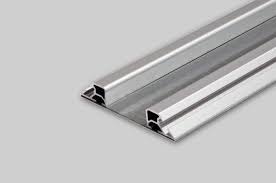
Introduction to Monorails
As cities around the globe grapple with increasing congestion, pollution, and the need for sustainable transport solutions, monorails are emerging as a viable and innovative option for urban transportation. These elevated rail systems not only minimise ground-level disruption but also provide a modern aesthetic to cityscapes, making them attractive for both commuters and city planners.
Global Trends in Monorail Development
Recent years have seen a marked increase in the implementation of monorail systems in various countries. According to a report by the International Association of Public Transport (UITP), there are currently over 80 operational monorail systems worldwide, with notable examples including the Tokyo Monorail in Japan and the Wuppertal Suspension Railway in Germany. These systems have proven to be efficient in reducing travel times and accommodating high passenger volumes.
The recent construction of the Mumbai Monorail in India, which opened in 2014, highlights the growing trend of integrating monorail networks into public transport systems, particularly in densely populated urban environments. The Mumbai Monorail has significantly improved connectivity in the city, reducing reliance on traditional road transport.
Innovative Technology and Infrastructure
Monorails employ advanced technologies that enhance safety and efficiency. Most modern systems use light rail technology, which allows for lighter infrastructure compared to conventional rail. Additionally, monorails often utilise automated train control systems, improving reliability and minimising human error. This is particularly significant in urban areas where traffic conditions can change rapidly.
Challenges and Future Outlook
Despite their advantages, monorails face challenges that could impact their future growth. High initial construction costs, engineering complexities, and the necessity of air rights in urban areas can hinder the expansion of monorail networks. Furthermore, public perception and acceptance play critical roles in project approval and funding.
However, as cities become more focused on sustainable and efficient transportation options, forecasts suggest that the monorail market will continue to expand. According to a market research report, the global monorail market is expected to grow by 22% over the next five years, driven by investments in smart city initiatives and modernisation of public transport.
Conclusion
Monorails present a compelling alternative to traditional transportation systems, offering cities a solution to urban congestion while promoting sustainability. As technology continues to advance and urban planning strategies evolve, monorails may become a common feature in the transit systems of the future, shaping the way we navigate our cities.
You may also like

Spotlight on Strand Larsen: Innovating Maritime Solutions

Understanding Germany: A Hub of Innovation and Culture
